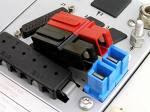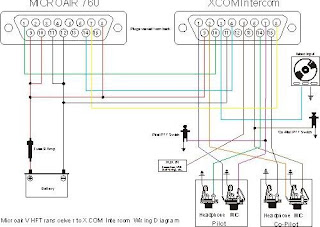Intercom system
An intercom system is an electronic communication device intended for limited private dialogue, directions, collaborations or announcement. Intercom can be portable or permanently mounted in buildings. Intercom can incorporate with telephones, walkie talkies and other mechanical such as signal lights and door latches.
A permanently installed intercom is generally composed of fixed microphone with speaker unit which is connected to central control panel by wires. A small home intercom might connect a few rooms in house. Larger system might connect all rooms in a school or hospital to central office. Intercom system in large building usually functions as public address system.
Intercom access control system are available with option of one call and one hand set to multiple call stations with hundreds of hand set. Intercom facilities can be available in audio only and audio video facilities. The audio and video system allows you to see who is calling at your front door, offices or gate before you allow or deny access. An intercom system can be connected to electric door, gates or electric locking devices.
Door & Camera Intercoms
Feel safe and secure answering your front door or gate without physically having to open them. The Hills intercom allows you to talk to the person and determine if they are known to you before you let them in. For added safety, you can disable front door answering from certain room stations e.g. children‘s bedrooms, preventing them from opening the door to strangers. A different door bell or chime sound may be used for different doors e.g. front, back, gate etc. to help you identify where the visitor is located.
Bedroom Intercoms
Ensure your peace of mind by being able to monitor your children when they are sleeping or playing. With the ‗automute‘ function, you won‘t be disturbed until the noise level from the monitored room station reaches a level that deserves your attention e.g. a crying baby. When your children are playing, the hands-free reply feature means you can communicate freely with them—they can answer you when you call without having to press any buttons. And with ‗sleep mode‘, you can program your room station to play music when you‘re ready for bed and automatically switch off after a certain time elapses.
Master Kitchen Intercoms
You can speak privately from any room station to other room station. By using the ‗selective room calling‘ feature, people in other rooms will not be disturbed. Using the Master Station, you are able to set the alarm clock, and choose which room stations will hear it. Make sure those who need to get up are up on time, and those who can sleep in are left alone. The Master Station has a digitally tuned AM / FM radio. Press one button to listen to your favorite radio station from any room within your home. Each room station retains individual control of volume.
Video / Lounge Intercoms
Not only you can hear your children when they are inside—the ‗monitor / camera‘ unit shows you what they are doing, whether they are inside or outside. Wherever your cameras are placed, the signal comes back to the monitor on this station for you to view. You can also switch between camera locations and monitor doors and gates, using them in conjunction with the front door answering units to see who is at your door.
Wiring Intercom
While every intercom product line is different, most analogue intercom systems have much in common. Voice signals of about a volt or two are carried atop a direct current power rail of 12, 30 or 48 volts which uses a pair of conductors. Signal light indications between stations can be accomplished through the use of additional conductors or can be carried on the main voice pair via tone frequencies sent above or below the speech frequency range. Multiple channels of simultaneous conversations can be carried over additional conductors within a cable multiple channels can easily be carried by packed switch digital intercom signals.
Portable intercoms are connected primarily using common shielded, twisted pair microphone cabling terminated with 3-pin XLR connectors. Building and vehicle intercoms are connected in a similar manner with shielded cabling often containing more than one twisted pair.
Two-wire intercom
Intercom systems are widely used in TV stations and outside broadcast vehicles such as those seen at sporting events or entertainment venues. There are essentially two different types of intercoms used in the television world: two-wire party line or four-wire matrix systems. In the beginning, TV stations would simply build their own communication systems using old phone equipment. However, today there are several manufacturers offering off-the-shelf systems. From the late 70's until the mid 90's the two-wire party line type systems were the most popular, primarily due to the technology that was available at the time. The two channel variety used a 32 Volt impedance generating central power supply to drive external stations or belt packs. This type of format allowed the two channels to operate in standard microphone cable, a feature highly desired by the broadcasters. These systems were very robust and simple to design, maintain and operate but had limited capacity and flexibility as they were usually hardwired. A typical user on the system could not choose who to talk to.
He would communicate with the same person or group of people until the system was manually reconfigured to allow communication with a different group of people. Two-wire routers or source assignment panels were then implemented to allow quick re-routing of a two-wire circuit. This reconfiguration was usually handled at a central location, but because voltage is used on the circuit to power the external user stations as well as communicate, there would usually be a pop when the channels were switched. So while one could change the system on-the-fly, it was usually not desirable to do so in the middle of a production, as the popping noise would distract to the rest of the production crew.
Four-wire intercom
Intercom systems are widely used in TV stations and outside broadcast vehicles such as those seen at sporting events or entertainment venues. There are essentially two different types of intercoms used in the television world: two-wire party line or four-wire matrix systems. In the beginning, TV stations would simply build their own communication systems using old phone equipment. However, today there are several manufacturers offering off-the-shelf systems. From the late 70's until the mid 90's the two-wire party line type systems were the most popular, primarily due to the technology that was available at the time. The two channel variety used a 32 Volt impedance generating central power supply to drive external stations or belt packs. This type of format allowed the two channels to operate in standard microphone cable, a feature highly desired by the broadcasters. These systems were very robust and simple to design, maintain and operate but had limited capacity and flexibility as they were usually hardwired. A typical user on the system could not choose who to talk to. He would communicate with the same person or group of people until the system was manually reconfigured to allow communication with a different group of people. Two-wire routers or source assignment panels were then implemented to allow quick re-routing of a two-wire circuit. This reconfiguration was usually handled at a central location, but because voltage is used on the circuit to power the external user stations as well as communicate, there would usually be a pop when the channels were switched. So while one could change the system on-the-fly, it was usually not desirable to do so in the middle of a production, as the popping noise would distract to the rest of the production crew.
All signal and alarm system has its specific function and uses which the purpose and need of its user. Deciding which of this device will be used can easily be done if you have basic knowledge of the feature and components of each devices in installing this kind of circuit.
Wireless intercom
For installations where it is not desirable or possible to run wires to support an intercom system, there are wireless intercom systems available. There are two major benefits of a wireless intercom system over the traditional wired intercom. The first is that installation is much easier since no wires have to be run between intercom units. The second is that you can easily move the units at any time. But with that ease of installation and convenience there is risk of interference from other wireless and electrical devices. Other wireless devices such as cordless telephones, wireless data networks, and remote audio speakers can interfere if they are near the intercom. Electrical devices such as motors, lighting fixtures and transformers can cause noise.
There may be concerns about privacy since conversations may be picked up on a scanner, baby monitor, cordless phone, or a similar device on the same frequency. Encrypted wireless intercoms can reduce or eliminate privacy risks and placement, installation, construction, grounding and shielding methods can reduce or eliminate the detrimental effects of external interference.
The United States and Canada have several frequency ranges for wireless intercom systems and other wireless products. They are 49MHz, FM band (200KH - 270KHz), 494-608 MHz, 900MHz, 2.4GHz, 5.8GHz, and MURS (150 MHz). There are also power line communication units that send signal over house wiring that have been referred to as wireless intercoms.
































